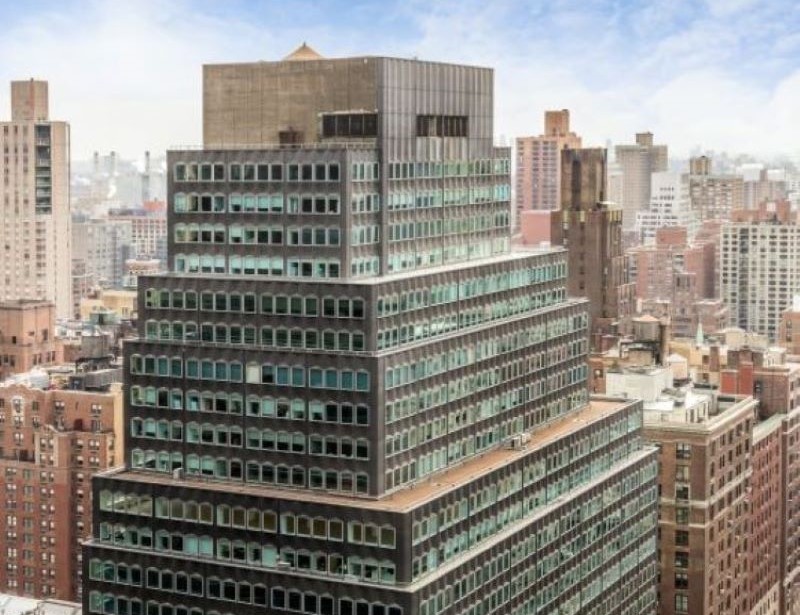The Changing Face of NYC Self Storage
CBRE’s Kenneth Herman and Christian Sonne discussed the possible changes and challenges the New York City self-storage market will face because of the recently adopted zoning regulations.
By Evelyn Jozsa
In December 2017, the New York City Council adopted the Self-Storage Text Amendment, which restricts self-storage development in industrial business zones (IBZs), in order to strengthen manufacturing and industrial businesses. While there are several projects underway in the New York metro, some trade areas are still undersupplied. Commercial Property Executive spoke with CBRE’s Kenneth Herman, senior appraiser of valuations and asset services, and Christian Sonne, executive vice president of valuations and advisory services, to unveil the challenges the New York self-storage market is about to face due to the restrictions imposed.
How will the activity in the market change due to the approval of the Self-Storage Text Amendment?
Herman: It’s safe to say that there will likely be fewer new self-storage projects on lots over 50,000 square feet in IBZs where the new restrictions apply, although it wouldn’t be surprising if some larger developments incorporated a self-storage element. Of course, it will have little effect on the market outside of the IBZs except to possibly fuel a premium for sites over 50,000 square feet outside of the IBZs. It’s worth noting that there are already many facilities in the boroughs that are under 50,000 square feet and many of those incorporate two levels of subcellars.
Therefore, for example, a 25,000-square-foot lot with a 2.0 floor area ratio could easily yield 50,000 square feet above grade and another 50,000 square feet below grade for a 100,000-square-foot development. Under the new law, in Subarea 1 of the IBZs, 25 percent of the storage spaces would need to be at least 100 square feet with 8-foot height and be designated “business-sized”, which might skew the typical unit mix that generally has a higher percentage of smaller units.
It’s worth noting that cellar space is included in the amendment and 25 percent of any necessary industrial space can be located in the cellar. Subarea 2 requires a special permit to construct a self-storage facility, but we assume it would still be subject to the same regulations if granted.
 What are the greatest challenges that investors and developers will face?
What are the greatest challenges that investors and developers will face?
Herman: Considering all of the recent new construction, many trade areas will approach equilibrium as new projects are completed and stabilized after what has been a period of many trade areas being undersupplied in the boroughs. It wouldn’t be surprising if developers started looking at smaller trade areas of a half-mile radius where density and demand still show an undersupply, especially for smaller projects.
What is the number one demand driver on the New York self-storage market?
Sonne: In general, the New York metro has very low supply per person (2.95 square feet per person) compared to the national average at just over 7 square feet per person. New self-storage construction in the New York metro, as of the third quarter of 2017, was 4.8 percent of existing supply. Comparatively, in major metros in the U.S., the ratio of new construction to existing supply varies from 0.3 percent (Indianapolis self-storage market) to 20.1 percent (Miami self-storage market). It’s worth noting that as all of the recent multifamily construction in the outer boroughs leases up in the next few years, some areas will see notable increases to population, which will likely translate into more demand for self-storage space.
According to the new rules, storage assets which comprise more than 50,000 square feet are required to set aside 25 percent of their square footage for industrial use. How will this change the nature of self-storage facilities?
Herman: The amendment refers to lot sizes of 50,000 square feet which can yield larger facilities depending on the allowable floor area ratio per zone. Most importantly, the amendment only applies to projects within IBZs, so it’s doubtful that you’ll see very many new projects on lots greater than 50,000 square feet in those areas.
Self-storage developers typically do not develop mixed-use properties, so it’s unlikely most will be interested in taking on new projects that would require such a drastic reworking of their investment/development models. Additionally, although industrial rents have been on the rise in recent years throughout the boroughs, current industrial rental rates are still well below achievable price per square foot for self-storage space and would negatively impact a new development’s earning potential.
Also, it is worth noting that developments would likely need to be significantly larger facilities under the new law to make it worth doing, not just a little bigger, meaning that a 60,000-square-foot facility would require 15,000 of industrial space, so your self-storage element would be less than if you didn’t go above 50,000 square feet to start with. Even at 80,000 square feet, they would only gain 10,000 square feet of additional self-storage space. We’ll see very few projects in the 50,000-100,000 square feet size range in IBZs.
What can you tell us about the New York metro self-storage market in terms of supply and demand?
Sonne: CBRE’s Self-Storage New Construction report for the third quarter (of 2017) showed that the New York metro is “oversupplied.” However, we note that New York is an anomaly because of the size and density of population. For all of self storage, the best metrics are determined by local trade area. A trade area in one part of the metro may be oversupplied, while another trade area a few miles away may be underserved. Two thirds of demand comes from a local trade area, based on ZIP code studies of facilities and investor surveys.
A typical trade area may be as small as a one-mile ring or up to a three-mile ring in urban markets (minimum population of 50,000). It is very difficult to induce demand for self storage because people are storing emotional memories and want their “stuff” safe and secure as well as located nearby home. In general, as noted in our report, the impact of new construction has been exaggerated by some sources. While we have seen a spike in new construction that exceeds population growth, we note there was a period of years of limited new construction.
Can we talk about a more balanced situation in the near future?
Sonne: Overall, we expect the market to balance toward equilibrium, but will see variances by trade area. Investment activity in New York metro has not slowed due to new construction and with all of the recent construction and planned or proposed construction in the pipeline, we are beginning to see the shift in many trade areas from being undersupplied to being in equilibrium. That said, as previously mentioned, in areas of significant new multifamily construction, such as Long Island City for instance, where thousands of new apartments are coming online in the next few years, the rise in population should feed the demand for self storage, further acting to keep the sector in a state of equilibrium.
Images courtesy of CBRE









You must be logged in to post a comment.